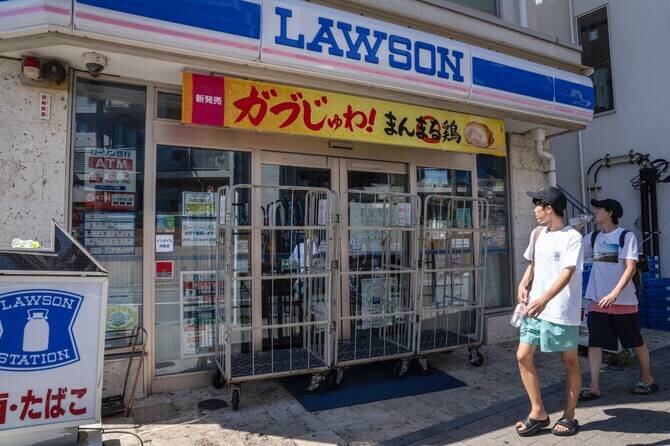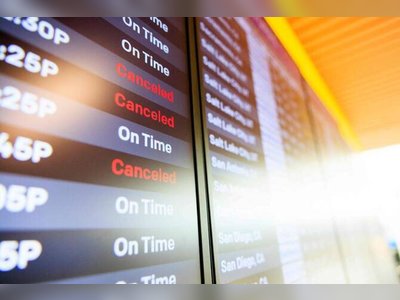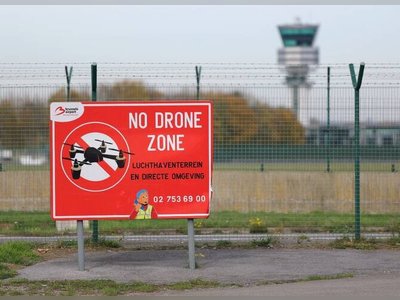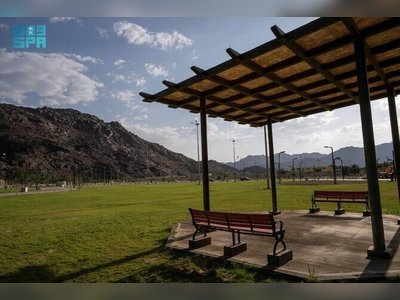
Japan Experiences Small Tsunami Following 6.7 Magnitude Earthquake
Tiny tsunami waves hit northern Pacific coast after offshore earthquake, with measured wave height of less than four inches in Ofunato.
Japan reported small tsunami waves along its northern Pacific coast on Sunday evening following an offshore 6.7-magnitude earthquake.
The first wave struck Miyako, Iwate, at approximately 5:37 p.m. (0837 GMT), although the Japan Meteorological Agency (JMA) was unable to measure its size due to its minimal impact.
A 10-centimeter (less than four inches) wave subsequently reached Ofunato two minutes later, as per the JMA's measurements.The earthquake occurred around 5:03 p.m. (0803 GMT) in waters off Iwate, prompting the JMA to issue a tsunami advisory for the region.
The advisory warned of possible waves up to one meter (three feet) high.
The United States Geological Survey reported the quake with a slightly higher magnitude of 6.8.Following the initial earthquake, several aftershocks were recorded by the JMA, ranging from 5.3 to 6.3 in magnitude.
Live broadcasts on Japanese television showed calm seas, indicating that the impact of these waves was limited.
Earlier on Sunday morning, six offshore quakes occurred in the same region, with magnitudes between 4.8 and 5.8; however, they did not prompt tsunami advisories.This recent activity in Japan is a stark reminder of the country's tectonic vulnerability.
Located at the convergence of four major tectonic plates along the Pacific 'Ring of Fire,' Japan experiences significant seismic activity.
The archipelago, home to approximately 125 million people, witnesses around 1,500 earthquakes annually, although the majority are mild.
However, the location and depth of these quakes can cause varying degrees of damage.Japan's vulnerability to such natural disasters is deeply ingrained in its collective memory.
A significant reminder of this came in 2011 when a massive 9.0-magnitude undersea earthquake triggered a tsunami that resulted in the deaths or disappearances of around 18,500 people.
Additionally, the disaster led to meltdowns at three reactors of the Fukushima nuclear plant, marking Japan's worst post-war catastrophe and the world's most severe nuclear accident since Chernobyl.
The first wave struck Miyako, Iwate, at approximately 5:37 p.m. (0837 GMT), although the Japan Meteorological Agency (JMA) was unable to measure its size due to its minimal impact.
A 10-centimeter (less than four inches) wave subsequently reached Ofunato two minutes later, as per the JMA's measurements.The earthquake occurred around 5:03 p.m. (0803 GMT) in waters off Iwate, prompting the JMA to issue a tsunami advisory for the region.
The advisory warned of possible waves up to one meter (three feet) high.
The United States Geological Survey reported the quake with a slightly higher magnitude of 6.8.Following the initial earthquake, several aftershocks were recorded by the JMA, ranging from 5.3 to 6.3 in magnitude.
Live broadcasts on Japanese television showed calm seas, indicating that the impact of these waves was limited.
Earlier on Sunday morning, six offshore quakes occurred in the same region, with magnitudes between 4.8 and 5.8; however, they did not prompt tsunami advisories.This recent activity in Japan is a stark reminder of the country's tectonic vulnerability.
Located at the convergence of four major tectonic plates along the Pacific 'Ring of Fire,' Japan experiences significant seismic activity.
The archipelago, home to approximately 125 million people, witnesses around 1,500 earthquakes annually, although the majority are mild.
However, the location and depth of these quakes can cause varying degrees of damage.Japan's vulnerability to such natural disasters is deeply ingrained in its collective memory.
A significant reminder of this came in 2011 when a massive 9.0-magnitude undersea earthquake triggered a tsunami that resulted in the deaths or disappearances of around 18,500 people.
Additionally, the disaster led to meltdowns at three reactors of the Fukushima nuclear plant, marking Japan's worst post-war catastrophe and the world's most severe nuclear accident since Chernobyl.










